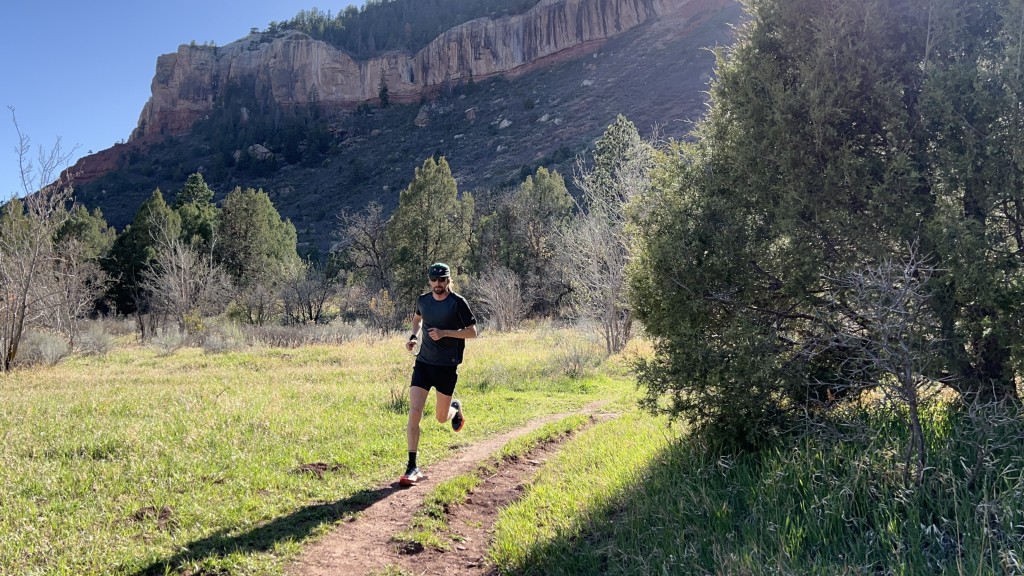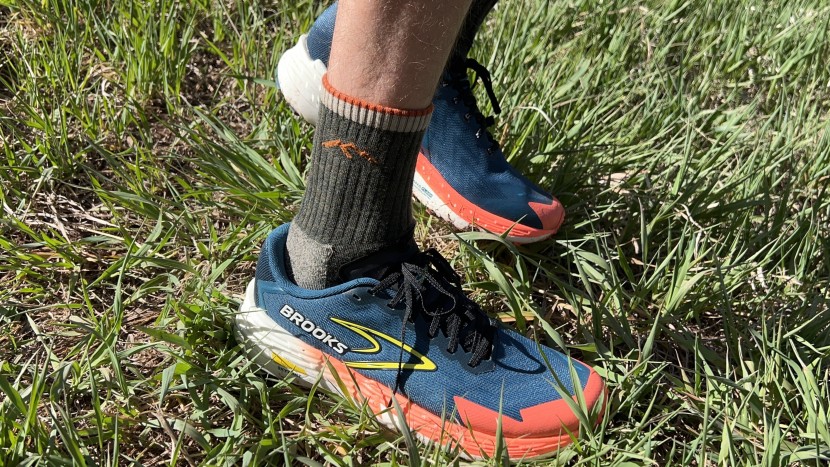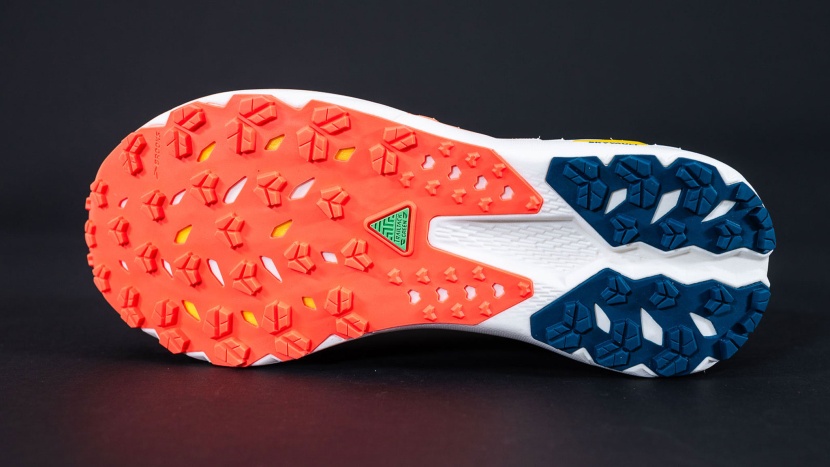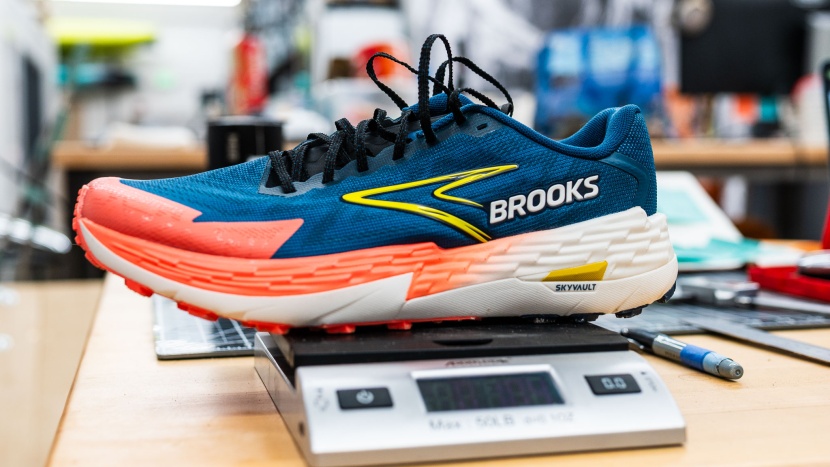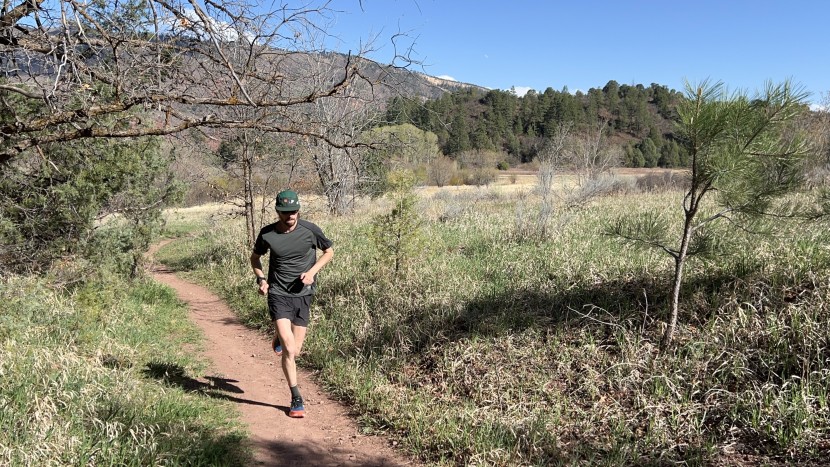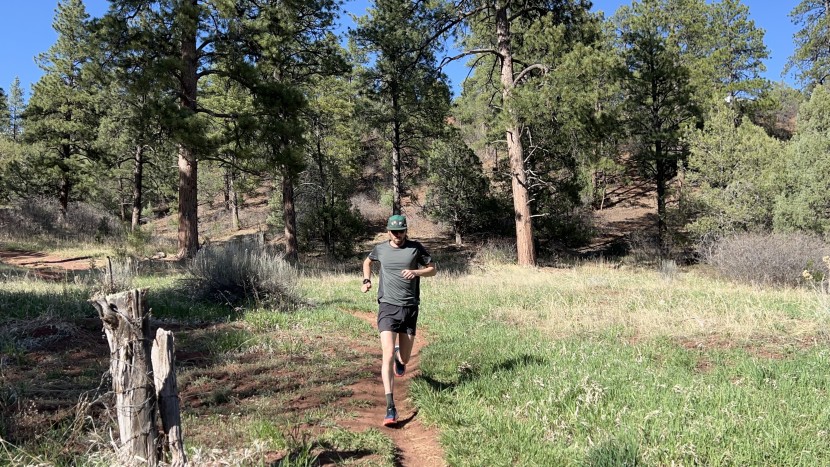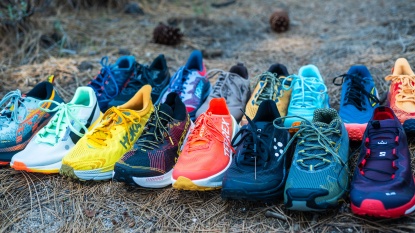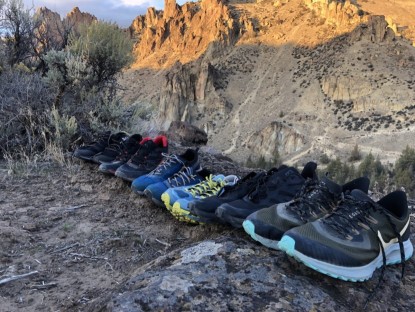
Our Verdict
Compare to Similar Products
 This Product
Brooks Catamount 4 | |||||
|---|---|---|---|---|---|
| Awards | Best Trail Running Shoe with Ultralight Cushioning | Best Crossover Road-to-Trail Performance | Best Overall Trail Running Shoe for Men | Best Value Men's Trail Runners | |
| Price | $151.56 at Amazon Compare at 2 sellers | $140.00 at Backcountry Compare at 2 sellers | $116.25 at Backcountry Compare at 2 sellers | $190 List $159.05 at Amazon | $110.00 at REI Compare at 2 sellers |
Overall Score  |
|||||
| Star Rating | |||||
| Bottom Line | While still comfortable and rigid, some runners will prefer the lighter more airy design of the Catamount 3 | With each step you are picking up less than the competition, and for advanced runners the precision and speed are unmatched | Great technical performance with an excellent snug fit | A perfectly fitting, comfortable, and very protective shoe that just begs to be worn on long run days | While great in moderate terrain those in technical or loose may opt for something more rugged |
| Rating Categories | Brooks Catamount 4 | Nnormal Kjerag | La Sportiva Prodigi... | Salomon S/Lab Ultra 3 | Brooks Divide 5 |
| Comfort and Fit (25%) | |||||
| Traction (20%) | |||||
| Stability (15%) | |||||
| Foot Protection (15%) | |||||
| Weight (15%) | |||||
| Sensitivity (10%) | |||||
| Specifications | Brooks Catamount 4 | Nnormal Kjerag | La Sportiva Prodigi... | Salomon S/Lab Ultra 3 | Brooks Divide 5 |
| Measured Heel Stack Height | 32 mm | 25 mm | 29 mm | 31 mm | 38 mm |
| Measured Heel-to-Toe Drop | 8 mm | 8 mm | 5 mm | 8 mm | 11 mm |
| Rock Plate | SkyVault | No | No | No | No |
| Measured Lug Depth | 3.3 mm | 3.0 mm | 3.8 mm | 3.5 mm | 2.8 mm |
| Measured Weight | 10.49 oz | 8.05 oz | 9.79 oz | 10.64 oz | 10.55 oz |
| Upper | Synthetic textile | Matryx Jacquard | PES Power Wire | Matryx Jacquard | Mesh |
| Midsole | DNA Flash | EExpure midsole | XFlow Speed | Energy Save PU foam with Profeel Film rock protection | Foam |
| Outsole | TrailTack Rubber | Vibram Litebase Megagrip | FriXion XF 2.0 | Salomon Contagrip MA | Rubber |
| Sizes Available | 7 - 15 US regular | 4.5 - 13.5 US regular |
7.5 - 15.5 US regular | 4 - 13 US regular |
7 - 15 US regular |
| Heel Tab Type | None | None | None | None | None |
| Claimed Heel-to-Toe Drop | 6 mm | 6 mm | 6 mm | 8 mm | 8 mm |
Our Analysis and Test Results
The Brooks Catamount 4 is a departure from the lighter previous version — 10.49 ounces vs. 9.82 ounces (per shoe, US men's size 10.5) — and while it's still incredibly supportive and comfortable, we can't help but prefer the more agile Catamount 3. This updated version has a different rock plate that feels more rigid and planted. If you're after comfort and support, this is still a great option and is one of the best offerings from Brooks we've tested. However, if the lightness of the previous version spoke to you, you may be disappointed by the update.
Comfort and Fit
While there are some changes to this model, one thing that didn't change is the comfort of the upper. The materials remain excellent, and the thin mesh is both breathable and fast drying. I found the toe box to be pointed but accommodating, providing just the right level of security and breathing room. The thin tongue is excellent, and the minimal padding keeps it feeling light and premium. After long runs, I noticed no blisters or issues around the heel — in part due to the seamless interior.
The midsole is comfortable but has the signature stability we see with most Brooks. The previous Catamount 3 had quite a bit less rigidity and lateral stiffness. The v4's newfound stiffness can be attributed to its new SkyVault plate. While the model still excels at mixed terrain, it feels a bit less playful and more like other models already found in the Brooks lineup.
Traction
We measured the lugs at a depth of 3.3 mm, and they provide a good ride over easy terrain. I didn't love these lugs due to their spacing and found grip inconsistencies because of it. Loose conditions were trickier, but the TrailTack Green label rubber still offered plenty of grip on smooth surfaces. I found this iteration lost a bit of versatility, and its heavier nature makes it feel less at home approaching technical terrain. One benefit of the greater spacing is improved mud shedding, which makes for better traction in wet conditions.
Stability
The addition of the SkyVault plate really laterally stiffens the Catamount 4 and makes it much more locked in than the previous version. While we found the change unnecessary, we still think this shoe could be a great option for those who need supportive features. A combination of the width and plate creates a sensation of rigidity through the ankles, knees, and hips, allowing for confidence and surefootedness. We'd recommend this model most for terrain ranging from roads to moderate trails, with more experienced users being able to push it further. If your goal is to get a new favorite best on the local technical trail, then you may want to find something a bit less locked-in.
Foot Protection
Thanks to its underfoot plate and ample stack, there is little that will reach the sole of your foot — even if you mind yourself in the rockiest of terrain. An ultra-weld toe cap also does a great job of protecting against accidental bumps and catches. The upper wrap is secure and well-fitting, so the model feels precise and predictable. This added protection will help fight off fatigue in the longer stages of a run or race and could be a great addition to those who appreciate the supportive features.
Weight
Our in-house lab team measured the Catamount 4 at 10.49 ounces per shoe, size US men's 10.5. While still acceptably light, this is more than half an ounce heavier (per shoe) than the previous version (which was 9.82 ounces per shoe). Regardless, the model still feels fairly light and snappy, but I could never get over the fact that it felt heavier — and for me, weight is a big deal, especially in technical terrain. On moderate terrain, the model still felt snappy and light, and the turnover was smooth and efficient. Whether we recommend this for you or not will determine your terrain selection. I find the Catamount to work well in varied terrain or when running consistently on smooth, buffed track or fire roads. If you're heading for a ton of bounding between rocks, you may want something that feels a bit more freeing.
Sensitivity
Due to the stiffening of this version, there is less sensitivity than you would hope for. The model often felt slightly vague in rocky terrain, and my ankles would often pay the price on off-camber trails or ruts in the trail. Surprisingly, the Catamount 4 keeps the same stack as the previous model — our team measured a heel stack of 32 mm with a heel-toe drop of 8 mm. This new update works better for longer distances — which is where the Catamount 3 suffered — and we'd recommend it for long runs up to 50 miles.
Should You Buy the Brooks Catamount 4?
If you're a fan of Brooks and their supportive comfort but have wanted something lighter and better suited for trails, we'd highly consider the Catamount series. We'd recommend it to both beginners and experienced trail runners for easy to moderate terrain. While the model is versatile, it may come across as overly rigid in more technical terrain. If you're coming from the Catamount 3, you may feel disappointed by this more substantial-feeling iteration.
What Other Men's Trail Running Shoes Should You Consider?
If you like the stability of the Catamount 4 but want something a little more flexible and lively, check out the Hoka Mafate Speed 4. It has a lower drop but is still plenty stable with good energy transfer. For a stiffer feel, check out the Hoka Torrent 4, with a high stack like the Catamount but with subtle cushioning that also makes it great for long runs. Ultimately, you can't go wrong with the Catamount 4 on easy to moderate terrain, and its blend of comfort and support is well-liked by our testing team.







